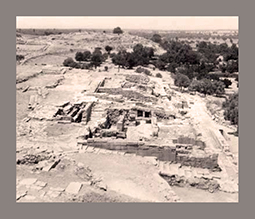Author: M. Figuera
Download article as .pdf: Immagazzinamento, circolazione e uso dei metalli in età neopalaziale: il caso di Haghia Triada

This paper aims to investigate the spatial distribution of metal finds within the site of Ayia Triada, the relationship between the contexts of discovery and functional aspects ‒ utilitarian, prestigious, ritual or ceremonial ‒ deepening the relationship between the metal in circulation, stored permanently or temporarily, or intended to be recycled. The goal is to investigate the choices within a single settlement, relating to the use or storage of metals, to the functional priorities that the artefacts played in a specific context and to any restrictive strategies developed by a social group to limit access to this highly valuable sources. Haghia Triada is characterized as a key site for the presence of a considerable amount of bronze artefacts and nineteen copper ox-hide ingots. It also allows an analysis not affected by the limitations inherent in the study of metals, because it was suddenly abandoned and thanks to that has preserved a large part of the recovery contexts.
